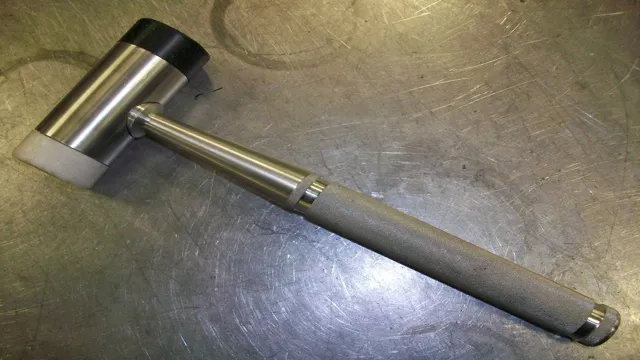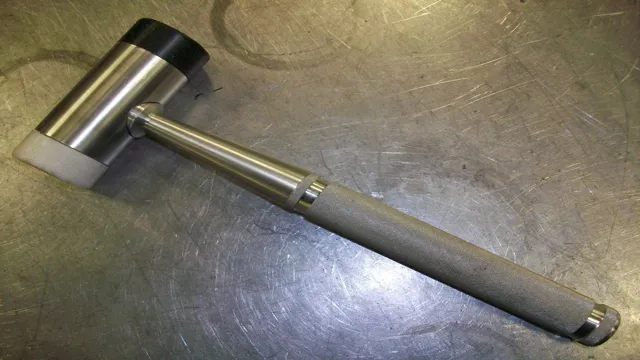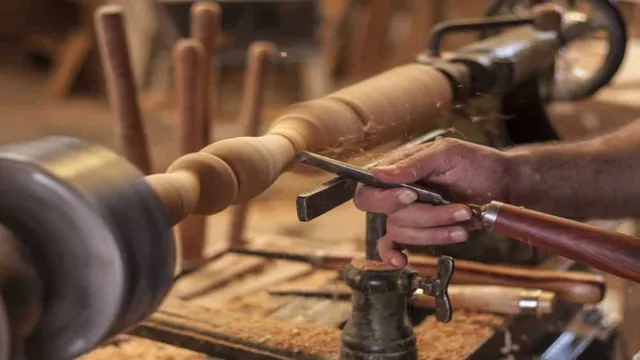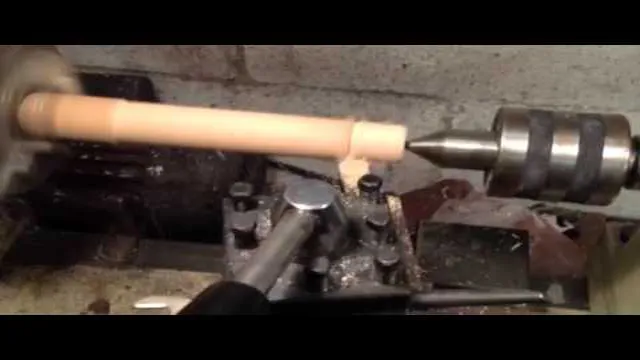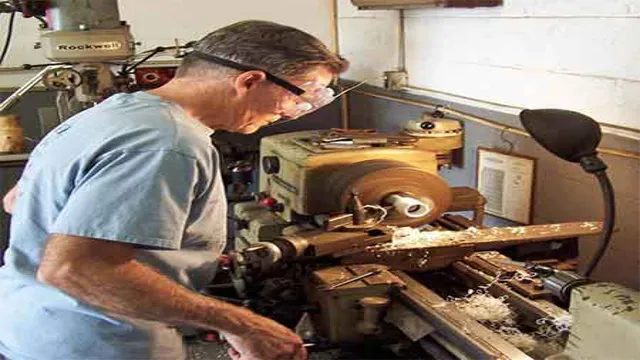How to Choose a Metal Lathe: A Comprehensive Guide for Finding the Perfect Machine

If you’re getting into metalworking, one of the most critical investments you’ll make is buying a metal lathe. However, with so many options and terminologies to consider, choosing the right one can feel daunting. But don’t fret! In this blog post, we’ll provide you with some tips and tricks to help you choose the perfect metal lathe to suit your needs.
We’ll answer questions like “what’s the best size for my workshop?”, “which is better, a mini lathe or a full-sized lathe?”, “what’s the difference between a wood lathe and a metal lathe?”, and many more. By the end of this blog post, you’ll have a clear understanding of what to look for when selecting a metal lathe, and you’ll be equipped to make the right choice for your metalworking needs. So sit back, grab a cup of coffee, and let’s get started!
Consider Your Projects
Choosing the right metal lathe for your projects can be a daunting task, considering the variety of types and models available in the market. One of the most important factors to consider when selecting a metal lathe is the project at hand. Different projects require different sizes and specifications of lathes.
For instance, if you are working on small tasks such as hobbyist projects or model making, you may not require a big metal lathe. However, for more significant tasks such as machining large diameter shafts or turning precision parts, you may need a lathe with more power and higher precision. It is also essential to consider the type of metal you intend to work with as certain lathes work better with specific metal types.
For example, softer metals such as aluminum require less horsepower and a lower speed range than harder metals like steel. By keeping your project requirements in mind and selecting a lathe that fits, you can ensure efficient and productive work while guaranteeing the longevity and well-being of your metal lathe.
Evaluate the Size and Weight of Your Projects
When taking on a project, it’s crucial to evaluate its size and weight. Is it a small project that can be done in a few hours, or is it a large-scale project that could take several weeks or months to complete? By considering the complexity of your project’s scope, you can better determine the amount of time and resources needed to get the job done right. Additionally, consider the weight of your project in terms of its overall importance.
Is it a high-priority project that requires a lot of attention, or is it something that can be put on the back burner? By understanding the size and weight of your projects, you’ll be better equipped to manage your workload and prioritize your tasks effectively. Ultimately, this will help you to work smarter, not harder, and achieve your goals in a timely and efficient manner.

Analyze the Material You Will Be Working With
When it comes to working on any project, it’s essential to understand and analyze the material you’ll be working with. Whether it’s a research paper, a design project, or a product creation initiative, evaluating the materials and resources you need is crucial. Take time to consider your project’s scope, goals, and requirements and identify any unique challenges that may arise.
That way, you can gather all the necessary tools, resources, and information to ensure your project runs smoothly and is successful. Doing so will help you avoid potential issues down the road and ensure that your project’s outcomes align with your expectations. So, whether you’re working on a short-term or long-term initiative, taking the time to analyze your material and plan appropriately can make all the difference.
Choose Your Power Source
When choosing a metal lathe, one important factor to consider is the power source. There are three main types of power sources available: electric, hydraulic, and manual. Electric lathes are the most common and convenient, offering variable speeds and ease of use.
Hydraulic lathes offer the advantage of high torque and power, but can be more complicated and difficult to maintain. Manual lathes, on the other hand, require the most skill and physical effort to operate, but can be advantageous in certain situations where precision is key. Ultimately, the power source you choose will depend on your specific needs and preferences.
Consider the type of projects you will be working on, your level of experience, and your budget when making your decision. With careful consideration, you can choose the right power source to help you get the job done effectively and efficiently.
Compare Belt-Driven and Electronic Lathes
When it comes to choosing between belt-driven and electronic lathes, the power source is a key factor to consider. Belt-driven lathes are powered by a belt that connects the motor to the spindle. This older technology is reliable and more affordable, making it a popular option for hobbyists and small workshops.
However, belt-driven lathes have set speed ranges and can be noisy. On the other hand, electronic lathes are powered by an electric motor and offer variable speed control for more precise cuts. They are also quieter and require less maintenance.
However, electronic lathes are generally more expensive and can be more difficult to repair. Ultimately, the choice between belt-driven and electronic lathes depends on your specific needs and budget.
Determine Your Power Requirements
When choosing a power source, it’s important to determine your power requirements first to ensure you choose a source that can handle your needs. Think about what you’ll be using the power source for and how much power it will require. For example, if you’re powering a small device, you might only need a battery or a small solar panel.
But if you’re using power tools or running a large appliance, you’ll need a more powerful source like a generator or a larger solar setup. Consider the location where you’ll be using the power source as well, as this can affect your options. For example, if you’re in a remote location without access to electricity, you’ll need to choose a source that can sustain you for long periods of time without needing to be recharged.
Keep in mind any restrictions, such as noise or emissions, that may affect your options as well. By carefully considering your power requirements, you can choose a source that will provide the electricity you need without any surprises.
Look for Essential Features
When it comes to choosing a metal lathe, it’s important to look for essential features that will make your job easier and more efficient. One key factor to consider is the motor size and horsepower, as this will determine the machine’s speed and power. Another essential feature is bed length, which will determine the size of projects you can handle.
A sturdy construction, like a cast-iron bed, is also important for stability and durability. Other important features to look for include a variable speed control, a digital readout for precision, and a quick-change tool post for easy adjustments. By considering these essential features, you can find a metal lathe that will meet your needs for precision and efficiency.
Think About Bed Length and Swing
When it comes to buying a new bed, there are some essential features that you should look for to ensure you get the best one for you. One thing to consider is the bed length. It’s important to choose a bed that is long enough to accommodate your height comfortably.
If you’re tall, you don’t want your feet hanging off the edge or hitting the footboard. Another essential feature to consider is swing. The amount of swing will vary from bed to bed, but it’s important to find one that has enough of it to provide a soothing and relaxing experience.
You want to be able to gently rock yourself to sleep or easily shift positions without feeling like you’re stuck in place. Don’t forget to test out these features before making a purchase so you can ensure you’re getting the perfect bed for your needs.
Check the RPM Range and Spindle Speed
When choosing a milling machine, it’s important to look for essential features that will help you achieve the best results. One of the key aspects to consider is the RPM range and spindle speed. This will depend on the type of material you plan on milling and the accuracy you’re aiming for.
Most milling machines come with a range of spindle speeds, but it’s important to ensure that the RPM range is suitable for your needs. For instance, if you’re working with tougher materials, you’ll need a higher RPM range to achieve the desired results. On the other hand, if you’re milling softer materials, a lower RPM range will suffice.
In addition to the RPM range, you also need to consider the spindle speed. The spindle speed is the rate at which the spindle rotates and is measured in revolutions per minute (RPM). A good milling machine should have a high spindle speed to ensure that you can work quickly and efficiently.
Remember to check the RPM range and spindle speed before investing in a milling machine to ensure that it meets your requirements.
Evaluate the Tailstock and Chuck System
When evaluating the tailstock and chuck system, it’s important to look for essential features that can enhance your turning experience. A well-designed system should provide stability and accuracy when holding the workpiece in place. The tailstock should have a sturdy construction and be easy to lock in place.
Look for a chuck system that can securely grip the workpiece and allow for easy adjustments. A keyless chuck can save time and effort when changing out tools. Another important feature to consider is the ability to release the workpiece quickly and easily, which can be especially useful when working on multiple pieces.
By carefully evaluating the tailstock and chuck system, you can improve your turning efficiency and quality of work.
Review Your Budget
When it comes to choosing a metal lathe, there are various factors you need to consider. But before you even start looking at different models and brands, it’s important to review your budget. Metal lathes can range from a few hundred dollars to several thousand dollars, depending on the features and specifications.
So, you need to determine how much you’re willing to spend on a lathe, and this should be based on your needs and expectations. If you’re a beginner, you don’t need to go for the most expensive lathe, but don’t compromise on quality either. Look for a lathe that’s within your budget range, and one that can handle your projects without breaking down frequently.
In summary, take the time to review your budget before making any purchase decision, and be realistic about your expectations and needs.
Compare Prices and Brands
When it comes to shopping, it can be easy to get caught up in the excitement and overspend, which is why it’s important to review your budget beforehand. Determine how much money you can comfortably allocate to your shopping trip and stick to it. A helpful tip is to compare prices and brands before making a purchase.
Look online or visit different stores to see where you can find the best deals without sacrificing quality. Take note of any sales or promotions and factor them into your decision-making process. Remember, just because something is on sale doesn’t necessarily mean it’s a good deal if it’s not something you need or want.
By staying mindful of your spending and taking the time to compare prices and brands, you can make the most of your budget and still come home with great purchases.
Determine Which Accessories You Need
When it comes to purchasing accessories for your gadgets, it’s important to review your budget before making any decisions. Determine what you can actually afford to spend on accessories and prioritize them. Certain accessories are more essential than others, such as protective cases and screen protectors.
These items not only keep your device safe but also help increase its lifespan. Other items, like wireless earbuds or smartwatch bands, may be nice to have but can be put off until later. Setting a budget for accessories not only helps keep costs under control but also prevents overspending and impulse buys.
Remember, you don’t need to purchase every single accessory available on the market to get the most out of your device. Focus on what is essential and within your budget. By doing so, you can make well-informed decisions and get the most value for your dollar.
Conclusion
Choosing a metal lathe is like selecting a dance partner – you want someone who can move with grace, precision, and power. To find your perfect match, consider the size, capacity, and durability of the machine. Think about your needs and the types of projects you’ll be working on.
And, of course, don’t forget to consider your budget. With a little bit of research and some careful consideration, you’re sure to find a metal lathe that’s a perfect fit for you. Happy machining!”
FAQs
What factors should I consider when choosing a metal lathe for my workshop?
When choosing a metal lathe, factors such as size, power, accuracy, and the types of materials you will be working with should be considered.
What kind of maintenance should I perform on my metal lathe?
Regular maintenance such as cleaning, lubrication, and alignment checks should be performed to ensure the longevity and proper functioning of your metal lathe.
What safety precautions should I take when using a metal lathe?
When using a metal lathe, you should wear appropriate protective gear, avoid distractions, and follow proper machining techniques and safety guidelines to prevent accidents.
Can a beginner use a metal lathe?
Yes, beginners can use a metal lathe with proper training, practice and safety precautions. Starting with a smaller, simpler model may be a good idea for beginners.
What types of metal can be worked on a metal lathe?
Metal lathes can work with a variety of metals, such as steel, aluminum, brass, and copper. The type of metal being worked may determine the size and power requirements of the lathe.
How do I choose the right cutting tools for my metal lathe?
Choosing the right cutting tools for your metal lathe depends on the type of work you will be doing, the materials you will be cutting, and the type of lathe you have. Consult with a knowledgeable supplier or machinist for guidance.
What operating features should I look for in a metal lathe?
Features such as variable speed control, digital readouts, and coolant systems can enhance the performance and convenience of your metal lathe. Consider which features are essential for the type of work you will be doing.

